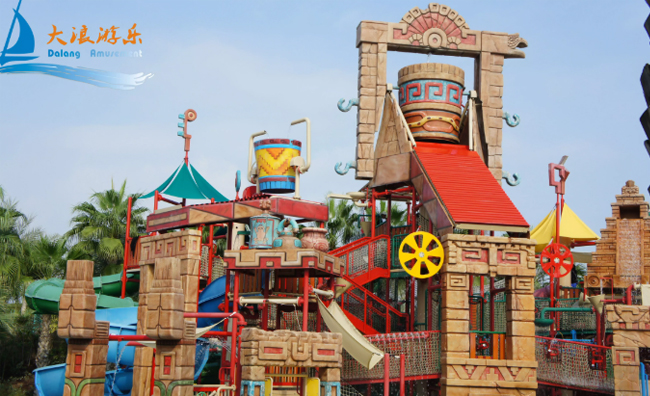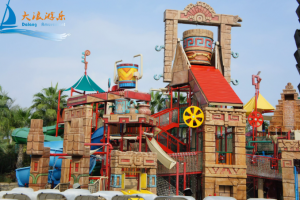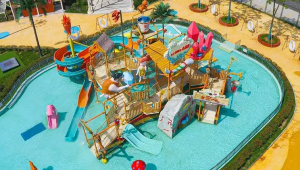Starting a water park can be a thrilling venture, offering fun and excitement for people of all ages. Water parks are a major investment and require careful planning, research, and execution. From choosing the right location to ensuring safety measures, there are numerous factors to consider. If you’re thinking about entering the water park industry, here’s everything you need to know before diving in.
1. Market Research and Feasibility Study
Before you commit to building a water park, conduct thorough market research to understand the demand, target audience, and competition in the area. Analyze the demographics, average income levels, local tourism, and any existing water parks or recreational facilities. A feasibility study will help you determine whether your water park can succeed in the chosen location.
Key Considerations:
What is the competition in the area, and what can you offer that others don’t?
Is there sufficient demand from locals and tourists?
What are the operating costs, including staffing, utilities, and insurance?
Benefit: Conducting a feasibility study helps minimize the risk of failure by understanding whether the location and concept will be profitable.
2. Choosing the Right Location
Selecting the perfect location is one of the most crucial decisions when starting a water park. Your choice of location will directly affect the success of your park. Consider these factors:
Accessibility: Is the location easy to reach by road, public transport, or even via air for tourists? Ensure there’s ample parking space and easy access for visitors.
Climate: A warm, sunny climate is ideal for water parks since people are more likely to visit during the summer months. However, consider options for maintaining year-round appeal, such as heated pools or indoor water attractions.
Size of the Property: Water parks need large areas for attractions, pools, slides, and parking. Make sure the site is spacious enough to accommodate your plans and any future expansions.
Benefit: A well-chosen location maximizes foot traffic and ensures that visitors can access your park easily and conveniently.
3. Designing the Water Park
A well-thought-out design is essential for attracting visitors and providing an enjoyable experience. Work with architects and engineers who specialize in water parks to ensure your design meets safety regulations, capacity needs, and aesthetic goals.
Key Elements to Include:
Water Slides and Attractions: Include a mix of thrilling slides, wave pools, lazy rivers, splash zones, and kid-friendly areas.
Theming: Many successful water parks incorporate themes (e.g., tropical, fantasy, or pirate-themed) to make the experience more immersive and fun.
Safety Features: Make sure that the design accounts for safety measures like lifeguard stations, water depth markers, emergency exits, and proper crowd management.
Benefit: A well-designed park ensures that guests are entertained, safe, and want to return. It also helps you stand out in a competitive market.
4. Obtaining Necessary Permits and Approvals
Starting a water park involves navigating a complex legal landscape. Depending on the location, you will need various permits and approvals from local, state, and federal agencies. Some of the required permits include:
Building Permits: For construction and water features installation.
Health and Safety Permits: For ensuring water quality, pool maintenance, and sanitation.
Environmental Permits: If you’re building near a natural water source or affecting local ecosystems, environmental approvals may be necessary.
Operational Permits: These could include business licenses, safety certifications, and insurance coverage for injuries or accidents.
Benefit: Ensuring you have the right permits protects your business from fines, legal issues, and delays during the construction process.
5. Choosing the Right Equipment and Vendors
Water parks are heavily reliant on equipment, such as water slides, wave pools, filtration systems, and water pumps. Selecting the right equipment is crucial for safety, performance, and longevity. Work with reputable suppliers and vendors who specialize in water park construction and maintenance.
Key Equipment Considerations:
Water Slides: Choose from a variety of slide options—thrill slides, family slides, and kiddie slides—to appeal to different age groups and preferences.
Water Filtration and Treatment Systems: Clean and safe water is essential for health standards. Invest in advanced filtration and treatment systems to keep water clean and clear.
Safety Equipment: This includes lifeguard stations, floatation devices, first aid kits, and emergency exits.
Benefit: High-quality equipment ensures a smooth, safe, and enjoyable experience for visitors, reducing maintenance costs and improving safety.
Water Park Equipment Tsunami Pool
6. Building and Staffing a Team
Once your design and permits are in place, the next step is assembling your team. A successful water park requires skilled staff in various roles, including:
Lifeguards: Trained professionals who ensure the safety of guests in the water.
Maintenance Staff: For the upkeep of pools, slides, equipment, and grounds.
Operations and Customer Service Staff: To manage ticket sales, guest services, food and beverage counters, and more.
Management Team: To oversee the park’s operations, from marketing and sales to finances and employee management.
Benefit: A well-trained, professional staff ensures that guests have a safe, smooth, and enjoyable experience, and that your water park runs efficiently.
7. Safety and Risk Management
Safety should always be your top priority. Water parks are high-risk environments due to the use of water slides, pools, and large crowds. Implementing a comprehensive safety and risk management plan is essential for preventing accidents and maintaining a positive reputation.
Lifeguard Training: Ensure that all lifeguards are certified in CPR, first aid, and water rescue techniques.
Signage and Warning Systems: Place clear safety signs at each attraction, indicating age/height restrictions, water depth, and potential hazards.
Emergency Protocols: Develop and communicate clear procedures for handling accidents, weather emergencies, and other incidents.
Benefit: A robust safety plan minimizes the risk of accidents, protecting both your guests and your business from costly lawsuits or damage to your reputation.
【Successful Cases】Mei Zhou-Jia Yin Gathering Light Water Park
8. Marketing Your Water Park
Once your park is ready, the next step is attracting visitors. Develop a comprehensive marketing strategy to create awareness and build excitement for the park’s opening. Some marketing tactics include:
Targeted Advertising: Focus on local advertising through newspapers, radio, and social media platforms to reach potential visitors.
Seasonal Promotions: Offer discounts, loyalty programs, or special deals during peak times to encourage repeat visits.
Collaborations with Tour Operators and Hotels: Partnering with local hotels or tour companies can help draw in out-of-town visitors.
Online Presence: Build an attractive, informative website, and maintain active social media channels to engage with your audience.
Benefit: A solid marketing strategy will help you draw crowds, increase brand visibility, and boost revenue.
9. Financial Planning and Budgeting
Starting a water park requires a significant upfront investment, with costs for land acquisition, construction, equipment, permits, and staffing. It’s essential to have a clear financial plan in place to ensure your business remains profitable in the long run.
Initial Costs: Land, construction, water slides, filtration systems, and safety equipment.
Ongoing Costs: Utilities (water, electricity), staffing, maintenance, insurance, and marketing.
Revenue Streams: Ticket sales, food and beverage concessions, gift shops, and private event rentals.
Benefit: Financial planning helps you manage expenses effectively and ensures that your park remains financially viable while maximizing revenue potential.
Conclusion
Starting a water park is an exciting yet challenging endeavor that requires careful planning, substantial investment, and attention to detail. By conducting thorough market research, selecting the right location, ensuring safety and regulatory compliance, and building a talented team, you can set the stage for a successful water park business. With a solid business plan and effective marketing strategies, your water park can become a popular destination, offering fun and relaxation to people of all ages for years to come.
Dalang had been the most authoritative and reliant water park equipment manufacturer all over the word.We would like to push forward International Amusement prosperity with International Enterprises!







